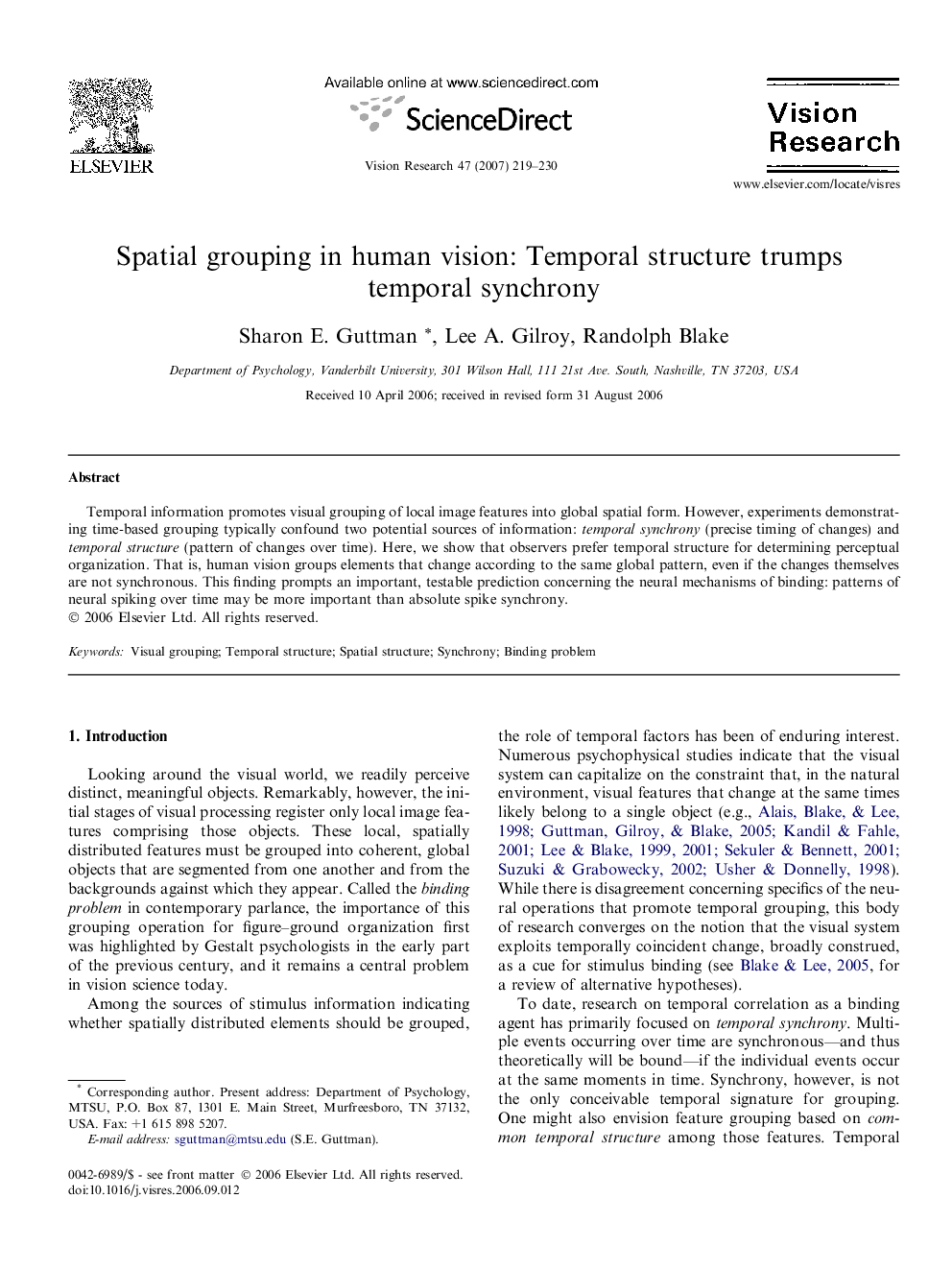| Article ID | Journal | Published Year | Pages | File Type |
|---|---|---|---|---|
| 4036007 | Vision Research | 2007 | 12 Pages |
Abstract
Temporal information promotes visual grouping of local image features into global spatial form. However, experiments demonstrating time-based grouping typically confound two potential sources of information: temporal synchrony (precise timing of changes) and temporal structure (pattern of changes over time). Here, we show that observers prefer temporal structure for determining perceptual organization. That is, human vision groups elements that change according to the same global pattern, even if the changes themselves are not synchronous. This finding prompts an important, testable prediction concerning the neural mechanisms of binding: patterns of neural spiking over time may be more important than absolute spike synchrony.
Related Topics
Life Sciences
Neuroscience
Sensory Systems
Authors
Sharon E. Guttman, Lee A. Gilroy, Randolph Blake,
